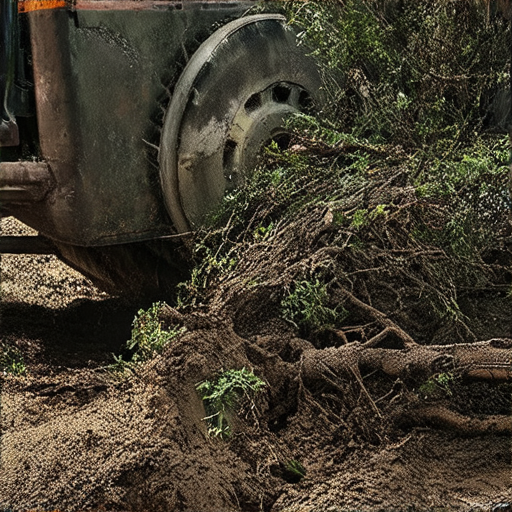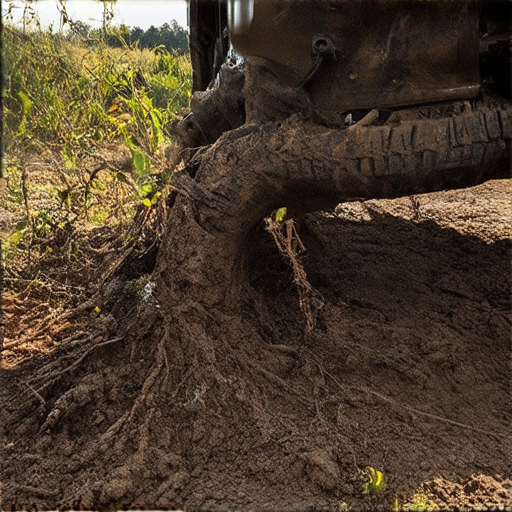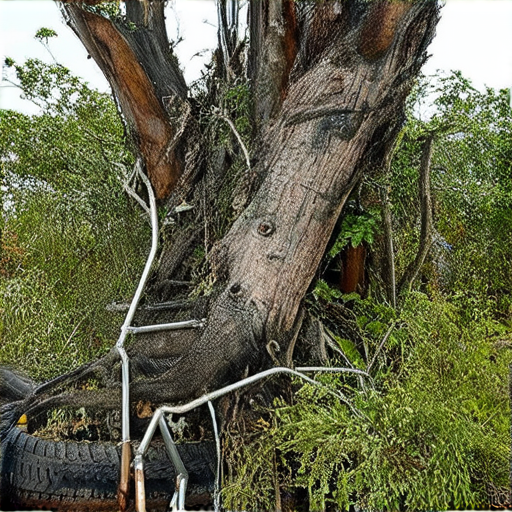Mud tires for trucks have become increasingly popular among outdoor enthusiasts and off-road drivers, who seek to navigate challenging terrain with confidence and control. But can these rugged tires handle everyday driving, and what are their strengths and weaknesses? In this comprehensive guide, we’ll delve into the world of mud tires for trucks, exploring their performance, durability, and maintenance requirements, as well as their impact on fuel efficiency and overall driving experience.

Daily Driving with Mud Tires: Weighing the Pros and Cons
Mud terrain tires are designed to handle off-road driving on rough, uneven surfaces, but can they withstand daily driving in various road conditions? While it’s technically possible to drive daily with mud tires, there are several factors to consider before making a decision.
Understanding Mud Terrain Tires
Mud terrain tires are designed to provide a balance between traction, durability, and on-road comfort. They typically feature aggressive tread patterns, robust sidewalls, and specialized compounds that help them grip and navigate challenging terrain. However, this design comes at the cost of on-road handling and fuel efficiency.
Daily Driving Considerations
When considering daily driving with mud tires, keep the following factors in mind:
- Tire Wear and Tear: Mud terrain tires are designed to wear down faster than all-terrain or touring tires due to their aggressive tread pattern and robust construction. This may lead to increased tire replacement costs over time.
- On-Road Handling: Mud terrain tires can compromise on-road handling, leading to reduced stability, increased stopping distances, and potentially compromised safety.
- Fuel Efficiency: Aggressive tread patterns and larger diameters can decrease fuel efficiency, resulting in increased fuel costs over time.
- Noise and Vibration: Mud terrain tires can generate excessive noise and vibration on paved roads, which may be uncomfortable for drivers and passengers.
Alternatives to Mud Tires for Daily Driving
If you’re looking for a versatile tire option for daily driving, consider the following alternatives:
- All-Terrain Tires: All-terrain tires offer a balance between on-road comfort and off-road capability, making them suitable for daily driving in various conditions.
- Touring Tires: Touring tires prioritize on-road comfort and fuel efficiency, making them ideal for daily driving on paved roads.
Conclusion
While it’s possible to drive daily with mud tires, it’s essential to weigh the pros and cons carefully. Consider your driving habits, road conditions, and budget before making a decision. If you do choose to drive daily with mud tires, ensure you maintain proper tire pressure, rotate your tires regularly, and monitor their condition closely to extend their lifespan.
Mud Tires for All Season: A Comprehensive Review
Determining whether mud tires are suitable for all-season driving can be a daunting task, especially when faced with varying weather conditions.
Understanding Mud Tires
- Mud tires are specifically designed to handle off-road terrain, particularly in muddy and rocky conditions.
- They typically feature aggressive tread patterns and robust sidewalls to provide stability and traction.
- However, these features can compromise handling and fuel efficiency on paved roads.
All-Season vs. Mud Tires
- All-season tires offer a balance between on-road comfort and off-road capability.
- They often feature a more moderate tread pattern and are designed to maintain traction in various weather conditions.
- While they may not excel in extreme off-road situations, all-season tires are generally more versatile than dedicated mud tires.
Driving in Rainy Conditions
- Mud tires tend to lose traction in rainy conditions due to their aggressive tread pattern, which can create hydroplaning issues.
- The risk of aquaplaning increases significantly, making them less suitable for wet weather driving.
- All-weather tires, on the other hand, are designed to maintain traction and control in rainy conditions, offering improved safety and reduced stopping distances.
Alternatives to Mud Tires
- All-terrain (AT) tires offer a compromise between on-road comfort and off-road capability.
- They feature a more moderate tread pattern than mud tires but still provide improved traction in rugged terrain.
- AT tires are generally more versatile than dedicated mud tires and can be used in a variety of driving conditions.
Conclusion
In conclusion, while mud tires excel in off-road situations, they are not ideal for all-season driving, particularly in rainy conditions.
All-weather tires and all-terrain tires offer better alternatives for drivers who need to navigate various weather conditions.

The Disadvantages of Mud Tyres
Mud tyres offer improved traction and control in off-road conditions, but they come with several disadvantages that may affect their suitability for everyday driving.
- Increased Noise and Vibration: The deeper and more aggressive tread pattern of mud tyres can lead to increased noise and a rougher ride compared to standard road tyres.
- Shorter Tread Life: The softer rubber compound used in mud tyres tends to wear out faster on the road, resulting in shorter tread life and requiring more frequent replacements.
- Reduced Fuel Efficiency: Mud tyres often have a larger contact patch, which can increase rolling resistance and reduce fuel efficiency, leading to higher fuel costs over time.
- Higher Maintenance Costs: The unique design and materials used in mud tyres can make them more prone to punctures and damage, increasing maintenance costs and downtime.
- Limited Roadworthiness: Mud tyres may not meet the same safety standards as standard road tyres, potentially affecting the vehicle’s overall roadworthiness and insurance coverage.

Do Mud Tires Wear Faster on a Highway?
Mud tires are designed to provide traction and control in off-road conditions, but their performance on highways can vary depending on several factors.
- Factors Affecting Wear:
- Tire design and construction
- Driving habits and speed
- Road surface and condition
How Do Mud Tires Wear on the Highway?
Mud tires with large, blocky, solid tread blocks tend to experience faster wear on the highway due to increased scrubbing and friction between the tread blocks and the road surface.
Why Does Scrubbing Cause Wear?
Scrubbing occurs when the tire’s tread blocks rub against the road surface, causing excessive heat buildup and wear on the tire’s components.
Impact of Driving Habits and Speed
Aggressive driving habits, such as rapid acceleration and braking, can exacerbate wear on mud tires on the highway.
Optimizing Tire Performance on Highways
To minimize wear on mud tires on highways, drivers should maintain a moderate pace, avoid sudden movements, and ensure proper tire inflation.
For trucks and vehicles intended for highway use, consider tires with a more aggressive tread pattern designed specifically for on-road performance.
The Life Expectancy of Mud Tires
The lifespan of a mud tire can vary significantly depending on several factors, including usage patterns, road conditions, and maintenance habits. While the general consensus among manufacturers suggests a typical lifespan of 20,000 to 40,000 miles, actual performance may differ substantially.
Factors Affecting Mud Tire Life
- Tire Usage Patterns: Frequent off-road driving tends to reduce tire lifespan due to increased wear and tear.
- Road Conditions: Driving on unpaved roads, rocky terrain, or extreme temperatures accelerates tire degradation.
- Maintenance Habits: Regular tire rotations, proper inflation, and avoiding excessive speed can contribute to longer tire life.
Expected Mileage Range for Different Driving Patterns
- Off-Road Heavy Use (<50%): 15,000 – 25,000 miles
- Off-Road Moderate Use (<30%): 25,000 – 35,000 miles
- Off-Road Light Use (<10%): 35,000 – 45,000 miles
- Highway Driving Only: 40,000 – 60,000 miles
Signs of Wear and Replacement
- Cracks in the Sidewall or Tread: Indicates premature aging and potential failure.
- Uneven Wear Pattern: Suggests improper inflation or uneven tire surface.
- Loss of Air Pressure: May indicate punctures or internal damage.
By understanding these factors and recognizing signs of wear, you can extend the life of your mud tires and ensure optimal performance during off-road excursions.
Do Mud Tires Get Worse Gas Mileage?
Mud tires are designed to provide excellent traction and control on uneven terrain, but they can indeed have a negative impact on fuel efficiency. Here’s what you need to know:
- Mud tires require more energy to roll due to their aggressive tread pattern, which increases rolling resistance.
- This increased rolling resistance leads to decreased fuel economy, as the engine needs to work harder to propel the vehicle forward.
- The amount of decrease in fuel economy depends on various factors, including the type of vehicle, driving habits, and road conditions.
Factors Affecting Fuel Economy with Mud Tires
Several factors contribute to the decrease in fuel economy when using mud tires:
- Tread Pattern: Aggressive tread patterns found in mud tires increase rolling resistance, leading to reduced fuel efficiency.
- Vehicle Weight: Heavier vehicles tend to experience greater decreases in fuel economy due to the added weight and increased rolling resistance.
- Driving Habits: Aggressive driving, such as speeding and rapid acceleration, can exacerbate the negative effects on fuel economy.
Comparative Analysis of All-Terrain and Mud Terrain Tires
Studies have shown that all-terrain tires generally offer better fuel economy compared to mud terrain tires. However, the difference may not be drastic, especially in certain driving scenarios:
- A study by the United States Environmental Protection Agency (EPA) found that all-terrain tires can provide up to 10% better fuel economy than mud terrain tires under certain conditions.
- Another study published in the Journal of Automotive Engineering found that the fuel economy difference between all-terrain and mud terrain tires was relatively small, ranging from 5-15% depending on the vehicle and driving conditions.
Conclusion
While mud tires excel in terms of traction and control, they can compromise fuel efficiency. Understanding the factors affecting fuel economy with mud tires and considering alternative tire options can help drivers balance their off-road needs with their desire for improved fuel efficiency.

0 Comments